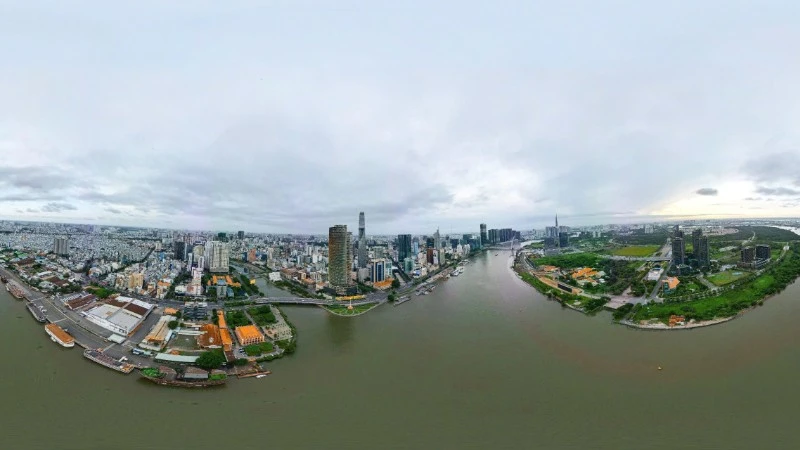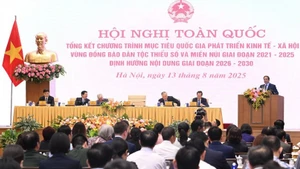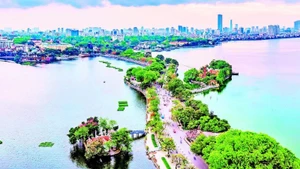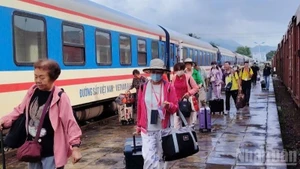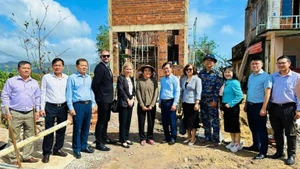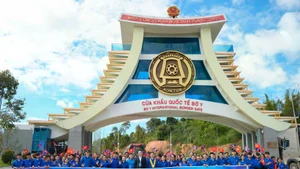To realise this ambitious goal, the city must not only harness its available resources but also effectively address planning challenges and remove development bottlenecks through a long-term, strategic vision.
Strategic vision
In line with Resolution No. 202/2025/QH15 of the National Assembly on the restructuring of provincial-level administrative units, both the government and the public hold high expectations for the creation of a “mega-city” Ho Chi Minh City—formed through the merger of Ho Chi Minh City, Binh Duong Province, and Ba Ria–Vung Tau Province. These expectations are well-founded, as all three former localities are dynamic and among the fastest-growing in the region and the country.
Former Binh Duong Province was a modern urban-industrial-service hub of both regional and international stature. Meanwhile, former Ba Ria–Vung Tau Province was a national maritime economic centre, a regional maritime service hub in Southeast Asia, and a provider of high-end services of international standards. It was also one of the major industrial centres in the Southeast.
Former Ho Chi Minh City was the national economic engine and a key metropolitan area, with a long-term vision that by 2060 it would become a global city that is civilised, modern and compassionate, and on par with major cities around the world. It is set to become Asia’s economic, financial, and services centre, as well as a key growth pole and development driver for the southern region and the entire country.
Estimates suggest that the new and merged Ho Chi Minh City will have the highest GRDP in the country – approximately 2.717 quadrillion VND (accounting for 24% of the national GDP), covering an area of 6,772 square kilometres, and home to over 13 million people.
With its regional centrality and long-term strategic outlook, the city is being developed according to a multi-centred urban model, with the creation of multifunctional zones designed to promote socio-economic interaction and foster effective regional linkages. According to Bui Xuan Cuong, Vice Chairman of the Ho Chi Minh City People’s Committee, the newly approved zoning plan adjustment provides a robust legal framework and serves as a guiding compass for the city to maximise its strengths in order to realise sustainable development goals – both for itself and the Southern Key Economic Region. This master plan is expected to help the city strive towards becoming one of the world’s 100 most liveable cities in the future.
Unlocking resources for sustainable growth
Despite its vast potential and ample development space, Ho Chi Minh City must also confront numerous challenges. Prior to the merger, each of the three localities faced unresolved issues such as fragmented planning, overloaded infrastructure, weak regional connectivity, and overstretched administrative capacity. These circumstances demand a rethinking of development models and innovative approaches to governance. In other words, managing a mega-city requires more effective strategies and tools.
Dr. Tran Du Lich, Chairman of the Advisory Council for the Implementation of National Assembly Resolution No. 98, noted that while the city holds an unparalleled socio-economic position, it needs a clear and unified direction to serve as a development compass. This is essential to avoid overlapping initiatives and prevent waste of resources. Although the three former localities had individually developed sound and sustainable plans, the key challenge lies in how the newly merged city harmonises these to create a coherent whole. For example, Binh Duong and Ba Ria–Vung Tau had already planned and established urban-industrial-service corridors.
Following the merger, the city only to expand high-tech urban zones in line with these existing plans. A crucial priority is infrastructure connectivity—only by effectively linking facilities can the city fully unlock and leverage the strengths of each region and sector.
Sharing the same viewpoint, Dr and Architect Le Quoc Hung, Deputy Director of the National Institute of Urban and Rural Planning (under the Ministry of Construction), stressed that sustainable development and international competitiveness require a comprehensive and synchronised master plan. Simply combining the three former plans mechanically will not work. The new city must address integrated spatial planning, adopt modern urban governance models, and pursue sustainable urban development. Moreover, cultural harmonisation and recognition of the distinctive development traits of each former locality must be taken into account.
Ho Chi Minh City is currently working to refine its administrative and operational model.
Ho Chi Minh City is currently working to refine its administrative and operational model. From this perspective, Associate Professor, Dr Trinh Tu Anh, Director of the Institute for Smart Cities and Management at the University of Economics, Ho Chi Minh City, proposed the formation of a “co-creation platform community” in which experts, citizens, and businesses collaborate to design innovative solutions and contribute ideas to the city’s development.
In specific sectors like industrial development, Dr Do Thien Anh Tuan, lecturer at Fulbright School of Public Policy and Management, asserted that the newly merged city will remain an economic locomotive. However, with its current favourable resources, it must now focus on deep and qualitative growth through restructuring and clearly defining roles among sub-regions to optimise the value chain.
The experts shared that the city should take science and technology as its foundation and policy innovation as its governance tool to accelerate development, especially by operating the shared data warehouse effectively in running the digital government. Policies should place citizens at the centre, making them both the beneficiaries and companions in the development process. New operational models of the two-tier local government, after more than a month of implementation, have shown positive results. However, many challenges still need to be identified and addressed so that resources and potential can be unleashed, enabling sustainable growth and helping achieve the city’s stated goals.
